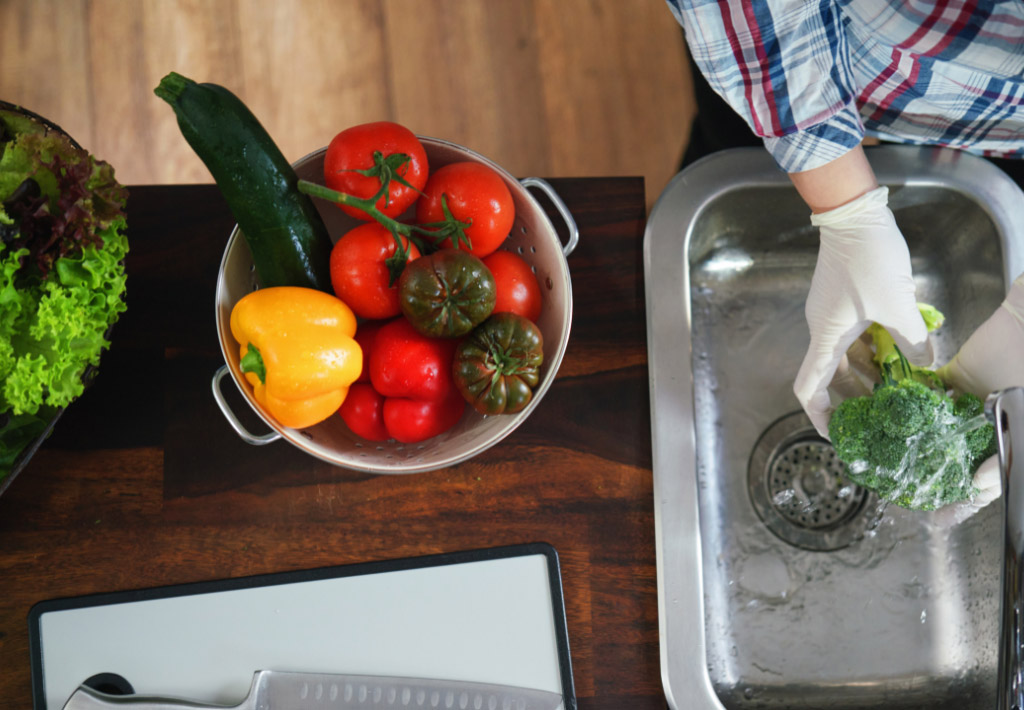Managing Food Allergies in School Canteens
Food allergies are real and increasing among Australian children. Research shows that 1 in 10 babies, 1 in 20 young teens and 1 in 50 adults have food allergies. Most schools now have many children who have been diagnosed with a potentially life-threatening food allergy.
School canteens can make food selection from the canteen a safer, positive experience for students with food allergy. Everyone working in a school food service, from the canteen supervisor through to the food preparation and service staff and volunteers, needs to be aware of the risk’s food allergies pose. The National Allergy Council has identified the following key strategies to make sure students with food allergy are able to purchase appropriate food from the school canteen include:
- Having good cleaning practices
- Storing food appropriately
- Preventing cross contamination
- Separation of spaces and time when preparing food
- Serving food appropriately.
Allergy support services
There are school-specific resources located on the National Allergy Council’s All About Allergens Resource Hub such as a Food Allergen Menu Matrix; Food allergen ingredient substitution tool and Standardised recipe template.
All about Allergens for Schools is a free online course for anyone working in schools. The comprehensive training details need to know information relevant to those working or volunteering in a food service located in a school and is presented using videos and interactive activities. The course is FREE, available at: www.foodallergytraining.org.au
For information about the requirements for allergy training and management in schools in your state or territory speak with your Department of Education and/or Health or ask your principal.
For food allergen management information contact the National Allergy Council on info@nationalallergy.org.au

Food safety and hygiene
Food safety practices in Australian school canteens
Everyone working with food in schools has a personal responsibility to handle food safely. Poor food safety can have serious consequences. Following good food safety practices and developing a positive food safety culture is the best way to ensure the food supplied is safe and high customer satisfaction. Paid and volunteer staff in school canteens need to understand their legal responsibilities, minimum standards and training requirements in their state or territory.
Food safety and hygiene – new standards
A new National Food Safety Standard, 3.2.2A – Food Safety Management Tools has been introduced across Australia. The purpose is to reduce the rate of foodborne illnesses linked to poor handling of food in food service, catering and retail food businesses – including school canteens. Part of the new standard requires school canteens to appoint a food safety supervisor. The new Standard is effective 8 December 2023.
What is a Food safety supervisor?
The food safety supervisor must be reasonably available to advise and supervise food handlers when they are handling unpackaged potentially hazardous food. This means that the food safety supervisor should be:
- in a position where they can oversee food handling activities
- onsite at the food premises while the business is handling unpackaged potentially hazardous foods or easily contactable (e.g. by phone).
If the food safety supervisor is on long periods of leave (for example longer than 1month) you should appoint another food safety supervisor in their absence.
How to be trained as a Food safety supervisor
A food safety supervisor must undergo training by a registered training organisation and complete competency in the SITSS00069 – Food Safety Supervision Skill Set:
- SITXFSA005 – Use hygienic practices for food safety
- SITXFSA006 – Participate in safe food handling practices.
The key components of the course are:
- Introduction to Food Safety
- Food Contamination Hazards and Prevention
- Personal Hygiene and Responsibilities for Food Handlers
- Safe Food Handling and Storage
- Food Safety Programs.
What about other staff in the canteen or food service?
All staff and volunteers preparing and/or serving food should have basic knowledge of the five main elements to preparing safe food:
- Food allergens
- Personal hygiene
- Food handling and storage
- Cleaning
- Pest control.
For information about the minimum standards required in schools in your state or territory speak with your Department of Education and/or Health and for training options see Food Standards Australia and New Zealand www.foodstandards.gov.au
Food Labels
Food labels in Australia and New Zealand, must show nutrition information presented in a standard table format called the Nutrition Information Panel or NIP. This shows quantities per serve and per 100g and is an invaluable tool to assess how nutritious the food may be. However, understanding exactly what it means can be tricky. The Reading Food Labels poster developed by FSANZ clearly explains all the elements in a simple way.
Food must also comply with Country of Original labelling, which provides information on if the food was:
- made in Australia – last major process was done here
- grown in Australia – 100% of ingredients are grown here
- a product of Australia – 100% of ingredients are grown here and all major processing was done here
- packed in Australia – includes a bar chart to indicate percentage of Australian ingredients.
For more information see the ACCC guide to Country of Origin Food Labelling.


